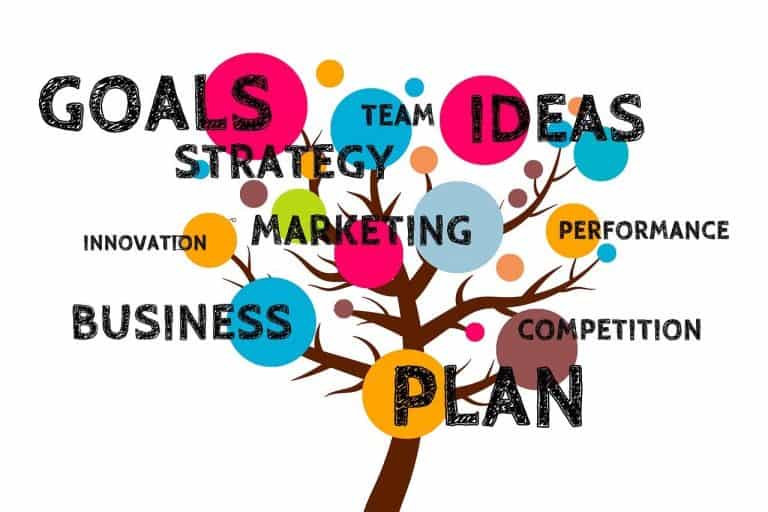In the fast-paced world of small business, managing cash flow can be the difference between success and failure. This guide on mastering cash flow projections for small businesses will equip you with the essential knowledge and tools to keep your finances in check and your business thriving.
Disclosure: If you click on my affiliate/advertiser’s links, I am going to receive a tiny commission. AND… Most of the time, you will receive an offer of some kind. It’ s a Win/Win!
Imagine navigating your business journey with a clear financial roadmap that shows you where you’re headed and what to expect. Cash flow projections provide this clarity, enabling you to make informed decisions, avoid unexpected cash crunches, and seize growth opportunities. This article goes deep into the nuances of cash flow projections, offering insights that will empower small business owners to forecast their financial future accurately.
The significance of cash flow projections extends beyond just managing day-to-day operations. They play a crucial role in strategic planning, helping businesses prepare for expansions, investments, and even downturns. By mastering cash flow projections, small business owners can gain a competitive edge, ensuring their enterprise is resilient and adaptable in an ever-changing market landscape.
Understanding the intricacies of cash flow projections is not just a luxury but a necessity for small businesses aiming for longevity and success. Whether you are a seasoned entrepreneur or just starting, this comprehensive guide will provide actionable steps and expert tips to enhance your financial forecasting skills.
Dive into this resourceful guide and uncover the secrets to creating accurate and effective cash flow projections. From understanding the basics to implementing advanced strategies, you will find everything you need to master this vital aspect of business finance.
- 1. **Understanding Cash Flow Projections**
- 2. **Importance of Cash Flow Projections for Small Businesses**
- 3. **Key Components of Cash Flow Projections**
- 4. **Step-by-Step Guide to Creating Cash Flow Projections**
- 5. **Common Mistakes to Avoid in Cash Flow Projections**
- 6. **Using Cash Flow Projections for Business Growth**
- 7. **Tools and Software for Cash Flow Projections**
- 8. **How to Adjust Cash Flow Projections for Seasonal Businesses**
- 9. **Case Studies: Successful Cash Flow Projections in Small Businesses**
- 10. **Future Trends in Cash Flow Projections**
Here’s a preview of what each section will discuss:
1. Understanding Cash Flow Projections
Cash flow projections are financial estimates that predict the inflow and outflow of cash over a specified period. These projections help businesses anticipate future cash needs and plan accordingly. They are essential for maintaining liquidity, ensuring that the business can meet its obligations without disruption.
2. Importance of Cash Flow Projections for Small Businesses
For small businesses, accurate cash flow projections are critical. They provide a clear picture of the financial health of the business, enabling owners to make informed decisions about spending, investments, and resource allocation. This foresight can prevent cash shortages and enhance financial stability.
3. Key Components of Cash Flow Projections
Effective cash flow projections consist of several key components: sales forecasts, expense estimates, cash inflows, and outflows. Understanding these elements is vital for creating reliable projections that can guide business strategies and operations.
4. Step-by-Step Guide to Creating Cash Flow Projections
Creating cash flow projections involves a systematic approach. This section provides a detailed, step-by-step guide to help small business owners develop accurate projections. From gathering financial data to forecasting future cash flows, each step is explained clearly.
5. Common Mistakes to Avoid in Cash Flow Projections
Even minor errors in cash flow projections can lead to significant financial challenges. This section highlights common mistakes, such as overly optimistic sales forecasts or underestimating expenses, and offers tips on how to avoid them to ensure your projections are as accurate as possible.
6. Using Cash Flow Projections for Business Growth
Cash flow projections are not just about avoiding financial pitfalls; they are also powerful tools for driving growth. Learn how to use projections to identify investment opportunities, plan for expansion, and make strategic decisions that fuel business growth.
7. Tools and Software for Cash Flow Projections
Leveraging the right tools and software can enhance the accuracy and efficiency of your cash flow projections. This section reviews popular tools, offering insights into their features and how they can benefit your business.
8. How to Adjust Cash Flow Projections for Seasonal Businesses
Seasonal variations can significantly impact cash flow. This section provides strategies for adjusting cash flow projections to account for seasonal fluctuations, ensuring that your business remains financially stable throughout the year.
9. Case Studies: Successful Cash Flow Projections in Small Businesses
Real-world examples offer valuable lessons. This section presents case studies of small businesses that have successfully implemented cash flow projections, highlighting the strategies they used and the outcomes they achieved.
10. Future Trends in Cash Flow Projections
The world of finance is continually evolving, and cash flow projections are no exception. This section explores emerging trends and technologies that are shaping the future of cash flow forecasting, helping you stay ahead of the curve.
By following this guide, small business owners can master the art of cash flow projections, ensuring their businesses are not only surviving but thriving in today’s competitive market.
1. Understanding Cash Flow Projections
Cash flow projections are essential for small businesses as they predict the movement of cash in and out of the business over a specific period. These projections enable business owners to anticipate future financial positions, making it easier to plan for upcoming expenses and investments. By mastering cash flow projections, small business owners can ensure they have enough liquidity to cover their operational costs, avoid cash shortages, and take advantage of new opportunities.
For example, a small retail shop might project their cash flow for the next quarter by estimating sales based on historical data, expected seasonal changes, and planned marketing activities. They will also forecast their expenses, including rent, salaries, and inventory purchases. If the projections show a potential cash shortfall, the owner can arrange for a short-term loan or adjust spending plans to avoid disruptions.
Understanding cash flow projections is crucial because it provides a clear picture of the business’s financial health. Without accurate projections, businesses risk running out of cash, missing out on growth opportunities, or facing unexpected financial crises. Therefore, regularly updating and reviewing cash flow projections is a vital practice for any small business.
2. Importance of Cash Flow Projections for Small Businesses
Cash flow projections are particularly important for small businesses because they often operate with limited financial resources. Unlike larger corporations, small businesses don’t have extensive cash reserves to fall back on, making accurate cash flow management critical for survival and growth.
Consider a small cafe that needs to invest in new equipment to expand its menu. Accurate cash flow projections will help the owner determine if they can afford the investment without jeopardising their ability to pay suppliers, staff, and rent. If the projections indicate a cash crunch, the owner can explore financing options or delay the purchase until the business’s cash position improves.
The importance of cash flow projections lies in their ability to provide foresight and control. By predicting future cash flows, small businesses can make informed decisions, avoid financial pitfalls, and strategically plan for growth. Neglecting cash flow projections can lead to mismanagement, resulting in missed opportunities and potential business failure.
3. Key Components of Cash Flow Projections
Effective cash flow projections consist of several key components: cash inflows, cash outflows, and the net cash flow. Each component plays a vital role in creating an accurate and comprehensive financial forecast.
Cash inflows include all sources of income, such as sales revenue, loans, and investments. For instance, a freelance graphic designer would include projected payments from clients, potential income from new contracts, and any loans taken for business expansion. Accurately estimating cash inflows requires analysing historical data and considering future sales trends.
Cash outflows encompass all expenses, including rent, utilities, salaries, and inventory purchases. For example, a small manufacturing business must forecast costs for raw materials, production labour, and overheads. Careful tracking of all expenses ensures that no costs are overlooked in the projections.
The net cash flow is the difference between cash inflows and outflows. Positive net cash flow indicates that the business generates more cash than it spends, while negative net cash flow signals a potential cash shortage. Understanding these components helps businesses create reliable cash flow projections, essential for maintaining financial stability and planning for growth.
4. Step-by-Step Guide to Creating Cash Flow Projections
Creating accurate cash flow projections involves a systematic approach. Follow these steps to develop reliable forecasts for your small business:
1. **Gather Historical Data**: Collect past financial statements, including income statements and balance sheets. Historical data provides a foundation for estimating future cash flows.
2. **Forecast Sales**: Predict future sales based on historical trends, market analysis, and planned marketing activities. For example, a seasonal business like a holiday decor shop would account for peak sales periods and off-seasons.
3. **Estimate Expenses**: List all expected expenses, such as rent, utilities, payroll, and inventory costs. Be thorough to ensure all costs are accounted for.
4. **Calculate Net Cash Flow**: Subtract total expenses from total income to determine the net cash flow. This figure indicates whether the business will have a surplus or deficit in the projected period.
5. **Review and Adjust**: Regularly review projections and adjust them based on actual performance and changing business conditions. Continuous monitoring helps maintain accuracy.
Following these steps ensures that small business owners create realistic and actionable cash flow projections, enabling them to manage finances effectively and plan for future growth.
5. Common Mistakes to Avoid in Cash Flow Projections
Even minor errors in cash flow projections can lead to significant financial challenges. Avoid these common mistakes to ensure your projections are accurate and reliable:
1. **Overly Optimistic Sales Forecasts**: Avoid the temptation to project unrealistically high sales. Base your forecasts on historical data and realistic market conditions. For example, if your bakery’s sales have grown by 5% annually, projecting a sudden 20% increase without a substantial reason can lead to cash shortfalls.
2. **Underestimating Expenses**: Ensure all expenses are accounted for, including variable costs like utilities and supplies. Missing out on any expense can skew your projections and cause financial strain.
3. **Ignoring Seasonal Variations**: For businesses with seasonal fluctuations, failing to account for these changes can result in inaccurate projections. For instance, a landscaping business should project lower cash inflows during winter months.
4. **Not Updating Projections**: Cash flow projections should be regularly updated to reflect actual performance and changing conditions. Outdated projections can lead to poor financial decisions.
By avoiding these mistakes, small business owners can create more accurate cash flow projections, ensuring better financial management and strategic planning.
6. Using Cash Flow Projections for Business Growth
Cash flow projections are not just tools for avoiding financial pitfalls; they are also powerful instruments for driving business growth. By leveraging accurate projections, small business owners can identify and seize growth opportunities.
For example, a small tech startup may use cash flow projections to plan for hiring additional staff or investing in new technology. By forecasting future cash inflows and outflows, the startup can determine the best time to make these investments without compromising their financial stability.
Using cash flow projections for growth involves analysing projected cash surpluses to fund expansion initiatives, such as opening new locations, launching marketing campaigns, or developing new products. This proactive approach ensures that growth activities are well-timed and financially sustainable.
Moreover, accurate cash flow projections can enhance a business’s credibility with investors and lenders, making it easier to secure funding for growth. Demonstrating a clear understanding of future cash flows reassures stakeholders that the business is well-managed and poised for success.
7. Tools and Software for Cash Flow Projections
Leveraging the right tools and software can enhance the accuracy and efficiency of your cash flow projections. Here are some popular options:
1. **QuickBooks**: This accounting software offers robust cash flow forecasting features, making it easy to track and project cash flows based on real-time data. It integrates with bank accounts and other financial tools, providing a comprehensive view of your finances.
2. **Xero**: Xero is another popular choice for small businesses, offering detailed cash flow reports and projections. It allows for easy collaboration with accountants and financial advisors.
3. **Float**: Specifically designed for cash flow forecasting, Float integrates with accounting software like QuickBooks and Xero. It provides visual cash flow projections, making it easy to understand and manage your finances.
4. **Microsoft Excel**: For businesses preferring a more hands-on approach, Excel offers flexibility in creating customised cash flow projection templates. Although it requires more manual input, it allows for tailored forecasting models.
Using these tools can streamline the projection process, reduce errors, and provide valuable insights into your business’s financial future. They help small business owners make informed decisions, ensuring better financial management and strategic planning.
8. How to Adjust Cash Flow Projections for Seasonal Businesses
Seasonal variations can significantly impact cash flow, making it essential for businesses with fluctuating demand to adjust their projections accordingly. Here’s how to manage cash flow projections for seasonal businesses:
1. **Identify Seasonal Trends**: Analyse historical data to identify patterns in sales and expenses. For example, a ski resort will have higher cash inflows during winter months and lower during summer.
2. **Adjust Sales Forecasts**: Based on identified trends, adjust your sales forecasts to reflect expected peaks and troughs. This ensures your projections are realistic and account for seasonal changes.
3. **Plan for Variable Expenses**: Seasonal businesses often have variable expenses, such as increased staffing or inventory during peak periods. Ensure these costs are included in your projections.
4. **Build a Cash Reserve**: During high-demand periods, set aside surplus cash to cover expenses during slower months. This reserve helps maintain financial stability throughout the year.
5. **Monitor and Update Regularly**: Regularly review and update your projections to reflect actual performance and changing conditions. This keeps your projections accurate and relevant.
By adjusting cash flow projections for seasonal variations, businesses can better manage their finances, avoid cash shortages, and ensure smooth operations year-round.
9. Case Studies: Successful Cash Flow Projections in Small Businesses
Real-world examples offer valuable lessons on the importance and effectiveness of accurate cash flow projections. Here are two case studies:
1. **A Small Retail Business**: A local boutique used cash flow projections to plan for the holiday season, their busiest time of year. By analysing past sales data and predicting future demand, they were able to stock up on popular items, hire additional staff, and arrange for extended store hours. As a result, the boutique maximised its holiday sales and maintained sufficient cash flow to cover increased expenses.
2. **A Tech Startup**: A tech startup specialising in mobile apps used cash flow projections to secure funding from investors. By presenting detailed and accurate projections, they demonstrated a clear understanding of their financial future and the potential for growth. This credibility helped them raise the necessary capital to expand their team and accelerate product development.
These case studies highlight how mastering cash flow projections can lead to successful outcomes. Accurate projections enabled the small retail business to capitalize on peak sales periods, ensuring they had the resources needed to meet customer demand. For the tech startup, reliable cash flow projections were instrumental in securing investor confidence and funding, which facilitated their growth and innovation.
Both examples illustrate the practical applications and benefits of cash flow projections in real-world scenarios. By learning from these successes, small business owners can understand the importance of precise forecasting and implement similar strategies to achieve their financial goals.
10. Future Trends in Cash Flow Projections
The world of finance is continually evolving, and cash flow projections are no exception. Here are some emerging trends and technologies shaping the future of cash flow forecasting:
1. **AI and Machine Learning**: Artificial intelligence (AI) and machine learning algorithms are increasingly being integrated into financial tools to enhance the accuracy of cash flow projections. These technologies can analyse large datasets, identify patterns, and predict future cash flows with greater precision. For instance, an e-commerce business can use AI-powered tools to forecast sales trends based on customer behaviour and market conditions.
2. **Real-Time Data Integration**: With the rise of cloud-based accounting software, businesses can now access real-time financial data. This allows for more accurate and timely cash flow projections. Real-time data integration ensures that projections are based on the latest financial information, reducing the risk of outdated or incorrect forecasts.
3. **Blockchain Technology**: Blockchain offers transparent and secure financial transactions, which can improve the accuracy of cash flow projections. By leveraging blockchain, businesses can track and verify transactions in real time, ensuring that cash inflows and outflows are accurately recorded and projected.
4. **Predictive Analytics**: Predictive analytics uses historical data and statistical algorithms to forecast future financial performance. Small businesses can benefit from predictive analytics by gaining insights into future cash flow trends and potential financial risks, enabling proactive decision-making.
5. **Collaborative Platforms**: Collaborative financial platforms allow business owners, accountants, and financial advisors to work together seamlessly on cash flow projections. These platforms facilitate better communication and coordination, leading to more accurate and comprehensive forecasts.
Understanding and adopting these future trends can give small businesses a competitive edge. By leveraging advanced technologies and innovative forecasting methods, businesses can improve the accuracy of their cash flow projections, enhance financial planning, and ensure long-term success. Staying ahead of these trends ensures that small business owners are prepared for the future, equipped with the tools and knowledge needed to navigate an ever-changing financial landscape.
Conclusion: Harnessing the Power of Cash Flow Projections for Business Success
Mastering cash flow projections is not just a financial exercise; it’s a strategic tool that can significantly enhance the stability and growth potential of small businesses. Throughout this comprehensive guide, we’ve looked into various aspects of cash flow projections, from understanding their importance and components to exploring practical steps for creating accurate forecasts. By incorporating these insights into your business operations, you can gain a clearer understanding of your financial landscape and make more informed decisions.
Effective cash flow projections are the cornerstone of robust financial planning. They allow small business owners to anticipate future cash needs, manage expenses, and seize growth opportunities with confidence. By avoiding common mistakes, leveraging the right tools, and adjusting projections for seasonal variations, you can create reliable financial forecasts that support your business goals. The real-world case studies presented here further underscore the transformative power of accurate cash flow projections in driving business success.
As we look to the future, the integration of advanced technologies like AI, machine learning, and blockchain will continue to revolutionize cash flow forecasting. Staying informed about these trends and adopting innovative tools can provide your business with a competitive edge. Real-time data integration and predictive analytics, in particular, offer unprecedented accuracy and insights, enabling proactive financial management and strategic planning.
The importance of regular updates and reviews cannot be overstated. Financial conditions and market dynamics are always evolving, and your cash flow projections should reflect these changes. By maintaining up-to-date forecasts, you can navigate uncertainties with agility and confidence, ensuring your business remains resilient and adaptable in an ever-changing environment.
Now is the time to take action. Implement the strategies and best practices outlined in this guide to master cash flow projections and secure your business’s financial future. Start by reviewing your current financial data, setting realistic sales and expense forecasts, and leveraging powerful forecasting tools to create detailed and accurate projections. Regularly revisit and adjust these projections to stay aligned with your business’s growth and market conditions.
We invite you to return to our blog for more insights and resources on elevating your business acumen and enhancing your leadership skills. Whether you’re looking to improve financial management, explore new growth strategies, or develop your leadership capabilities, our blog offers valuable content tailored to the needs of small business owners. Stay inspired, stay informed, and continue your journey towards business excellence.
By mastering cash flow projections, you’re not just managing finances—you’re strategically positioning your business for sustained success. Join our community of forward-thinking entrepreneurs and leaders, and let us support you in achieving your business aspirations. Together, we can navigate the challenges and opportunities that lie ahead, driving innovation and growth in your small business.
- Turn AI Anxiety into Competitive Advantage: How to Future-Proof Your Workforce for the AI Revolution
- Unlock Profit: Calculate Customer Lifetime Value & Maximize Growth
- Creating a Customer Persona: A Step-by-Step Guide On How To Do It
- Unleashing the Power of Digital Signage: The Best Software to Transform Your Business
- How Businesses Can Use Freelance Platforms & Expert Networks to Scale Smarter







